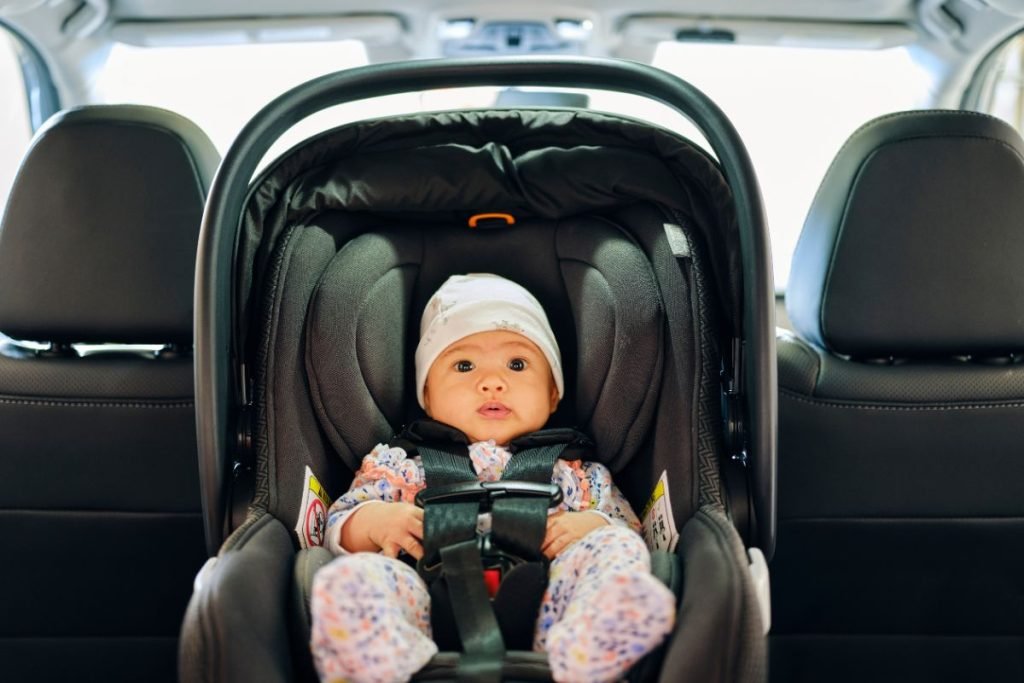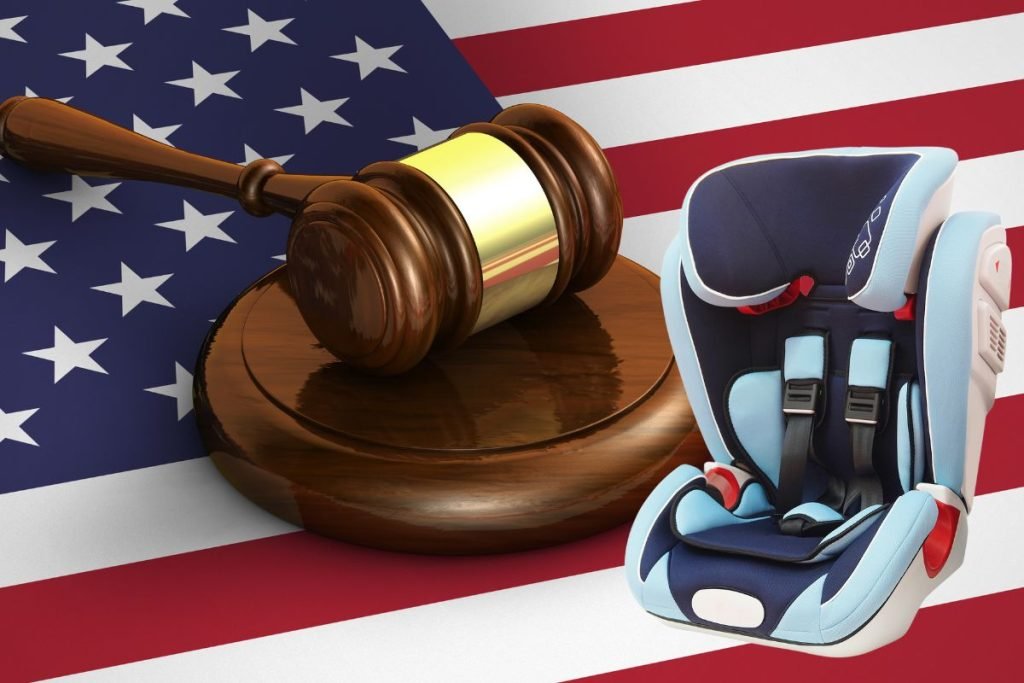What Are the Car Seat Laws for Safe and Secure Travel in the US and Abroad 2025?

Do you know the car seat laws for traveling with younger children in the US and abroad?
Child safety is a top priority when traveling, but car seat regulations can be confusing. Guide for parents on federal laws for children during transportation via rental cars, flights, or public transport.
According to state, national, and global regulations, you’ll learn to safely buckle up your child in the right car and booster seats. This will give you peace of mind and ensure your kids are safe on every trip.
Key Takeaway – Car Seat Laws for Safe and Secure Travel
- Infants and toddlers should remain rear-facing until at least age 2. Convertible seats allow facing forward around age 2, but rear-facing is safest.
- Children need booster seats once they outgrow forward-facing seats (around age 5) until seat belts properly fit them – typically 8-12 years old.
- While the US federal government provides guidelines, every state establishes specific age, weight, and height requirements for car and booster seats.
- Internationally, car seat regulations differ widely – research your destination’s laws and properly install approved seats meeting U.S. or foreign safety standards.
Car Seat Laws in the United States

Federal Recommendations
The Federal agencies provide guidelines and recommendations for proper child restraint use in vehicles through the National Highway Traffic Safety Administration (NHTSA). Their advice focuses on securing children and limiting forward movement in a crash.
- NHTSA advises keeping infants and toddlers rear-facing from birth until age 2. Most rear-facing seats have weight limits of 35-50 pounds and height limits of up to 44 inches. Studies show it’s safest for young children to ride rear-facing as long as possible to protect their spine and neck in a crash or sudden stop.
- Once a child outgrows rear-facing seats, NHTSA recommends using a forward-facing car seat with an internal harness system. Children should stay in forward-facing seats until they reach at least age 5, or until they reach the seat’s upper height and weight limits.
- Children should use belt-positioning booster seats after outgrowing forward-facing seats until seat belts fit them properly. This is typically between ages 8-12, or when children are tall enough that seat belts lie across their shoulder and chest rather than their neck or face, which is usually around 57-63 inches tall. Booster seats ensure proper positioning of lap and shoulder belts over a child’s body when regular vehicle seat belts don’t fit correctly due to their smaller frame. The booster seats lift children so seat belts are correctly positioned across their shoulders, chest, and hips rather than their neck, face, and abdomen.
State-by-State Laws
Though federal guidelines provide baseline recommendations for child car seat safety, specific laws and regulations vary by state. Parents should follow federal recommendations and local state laws regarding car seat requirements.
Each state has specific regulations about minimum age, weight, and height requirements for different types of car seats and seat belt use.
While all states adhere to basic federal guidelines, each state’s specific car seat laws differ in age, weight, shoulder belt, and height requirements for infants, toddlers, and older children.
Parents must be aware of and comply with their state’s particular child restraint laws and follow the federal guidelines.
- It is important to note that each state in the US has its own set of regulations regarding child car seats. These regulations typically specify the minimum age requirements for transitioning infants and children between different types of car seats. Generally, children must ride in a rear-facing car seat until they reach the age of 2. After that, they can move on to a forward-facing car seat until they are around age 4 or 5 years old. Finally, children must ride in a booster seat until they are at least 8 years old or have reached the height and weight limits specified by the booster seat manufacturer. It is crucial to follow these guidelines to ensure the safety of young passengers while traveling in a vehicle.
- To ensure the safety of children while traveling by car, many states have established specific weight and height requirements to determine which type of car seat should be used. These regulations dictate that children must use a more protective car seat until they reach the maximum weight and height limits set by the state. This helps to ensure that children are properly secured and protected in the event of an accident.
- Most states widely recommend that in the event of a car accident, children under 13 should ride in the back seat, as this is the optimal position to avoid the force of the front airbags. This is because front airbags are designed to protect adult passengers and can cause severe injury to young children. However, it is worth noting that this rule has some exceptions. Some states permit children above a certain age and weight to sit in the front seat. It is important to check your state’s laws and regulations to ensure your child is safely seated during car journeys.
International Car Seat Laws

Overview of Major Differences in Laws Abroad
Car seat and child restraint laws differ greatly between countries compared to the US’s detailed child passenger safety regulations.
While some destinations have only minimal safety standards or recommendations for the proper car seat, booster seat, and seat belt use based on a child’s age, height, and weight, others have specific requirements that parents must adhere to.
Parents traveling internationally must research the specific regulations for their destination regarding the rear seat front-facing limits, forward-facing seats, booster seat ages, where children can sit, and law enforcement.
Some countries have no formal seat laws, just guidelines, while others completely prohibit children from sitting in front seats. Most countries require child safety seats, but the maximum ages and sizes vary. However, using properly installed US car seats generally meets safety standards elsewhere.
Safety Standards in European Countries
In Europe, UNECE Regulation 44/04 establishes the minimum safety standards for child restraint systems that vehicles and seats must meet. However, each country has its specific laws regarding child seats.
For instance, in Sweden, children must use rear-facing seats until they are four years old, while in the UK, there are no legal minimum ages. In Germany, it is illegal for children under 12 to occupy the front seats of a car.
The enforcement of car seat and child safety restraint laws varies by country, ranging from no enforcement to hefty fines. Therefore, it is important to research each destination’s specific child passenger and restraint laws.
Requirements in Mexico, Canada, and Asia
It’s important to note that Mexico has no national car seat laws except in some specific states. In Canada, the laws are similar to those in the US, where children must use rear-facing seats until they reach two years of age.
On the other hand, Japan and Singapore mandate seats for children under six, while in Hong Kong, only seat belt use is required for children over three.
Child seat regulations are minimal in most parts of Asia, except in South Korea. So it is important to check the local regulations and laws to avoid issues and ensure your child’s safety while driving.
Following Car Seat Laws While Traveling

Renting Car Seats
When renting a car for your family trip, you can also rent infant, convertible, and booster seats from the rental company to ensure you have the appropriate child restraint system properly installed for your child’s age, height, and weight.
Looking for travel options? Check out our tips on Best Travel Car Seats for recommendations to ensure safety and comfort on the road.
Most major rental agencies offer FAA-approved child safety seats which meet all federal motor vehicle safety standards. It is recommended that you reserve car seats in advance and verify that the type and size of the seat are appropriate for your child based on their current development stage, dimensions, and weight limits.
Additionally, reviewing the vehicle’s seat belt installation manuals is important to ensure that the rental seats are securely fitted in the back seat and that the harnesses are properly adjusted.
Bringing Your Car Seat
When traveling with children, many parents bring their child seats instead of relying on rentals. This ensures you have the appropriate seat for your child’s age, height, weight range, and developmental needs.
Check the airline baggage policies and rental company guidelines to avoid any issues. Most allow child seats to be checked in as baggage or installed in the vehicle.
When installing the seat in the rental car, it is important to use the seat belt path or Lower Anchors and Tethers for Children (LATCH) in the rear seats as per the car manual. Finally, follow the car seat manufacturer’s directions to comply with child restraint laws.
Public Transportation Requirements
It is important to follow local child seat regulations when traveling with children on public transit such as buses, subways, or trains.
If you are traveling with young kids, a portable car seat is recommended to ensure child passenger safety laws compliance. Older children can use the vehicle seat belt system.
Researching the child safety seat requirements for the city or country you are visiting is important before using public transportation with children. This will help ensure a safe and comfortable journey for everyone.
Airline Regulations
When traveling by air, it is important to ensure the safety of young children on board the aircraft. For guidance on airline travel, including the use of FAA-approved car seats, explore our post on Tips for Using a Travel Car Seat on Airplanes for practical advice and safety tips.
If the child is over 2 years old, they can use adult seat belts or aircraft seat belts. Some international airlines provide harnesses or Certified Restraint Devices (CRDs) for child safety.
It is important to follow the airline’s and destination’s car seat travel regulations when flying overseas to ensure compliance with regulations. Avoid using non-compliant foreign seats. When using airport shuttles, properly install the children’s car seats to ensure their safety.
Summary
When traveling with children by car, plane, train, or bus, following the proper car seat and seat belt laws is vital but complicated. Regulations vary widely across the U.S. and internationally.
This guide breaks down the key rules: keep infants rear-facing, transition from rear-facing position for older kids to forward-facing seats and boosters, research destinations’ laws, bring approved seats or rent them, and install car seats correctly.
By understanding the regulations and using the right restraint system for your child’s age and size, you can ensure their safety and comply with all applicable laws on every part of your trip.
Frequently Asked Questions
Can I Rent a Car Seat When Traveling?
Many car rental companies offer infant, convertible, or booster car seat rentals. Ensure you reserve and double-check proper installation when you pick up the vehicle.
How Long Should a Child Be Rear-Facing?
The AAP recommends keeping children rear-facing until at least age 2. Many experts advise extended rear-facing up to the car seat’s maximum height and weight limits for optimal safety.
When Can a Child Use a Booster Seat?
Children can transition from a forward-facing harness seat to a belt-positioning booster, typically between the children ages 5-7, once they exceed the seat’s height or weight limits (usually around 4’ 9” tall and 65 pounds).
At What Age Can a Child Face Forward in the Car?
Most convertible car seats allow children to face forward around age 2. However, the AAP suggests riding rear-facing as long as possible before flipping to the forward-facing position.
What Are the Car Seat Laws in the US?
While the NHTSA provides federal guidance, all 50 US states establish specific car seat usage, installation, and positioning laws covering age, height, weight, and seating location appropriateness.
What Are the Car Seat Laws in Europe?
The UNECE ensures standard i-Size car seat regulations across Europe with common labels, sizing, and requirements, making car seat manufacturers and installation consistent between vehicles and countries. Kids must remain rear-facing until 15 months.





